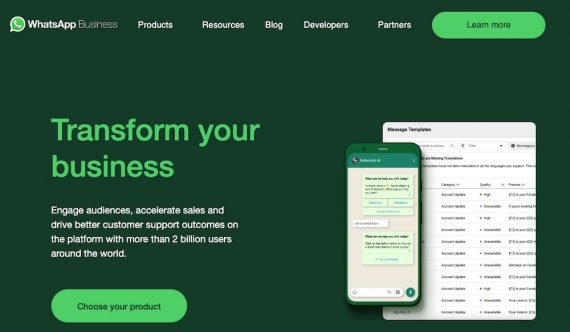Good customer service can be the difference between a one-time and a repeat buyer. But customers’ preferences vary as to their favored channel. Some prefer human interaction. Others seek self-serve or automated solutions.
What follows are eight common customer service channels with pros and cons of each.
Phone

Phone support is the most personal, but it’s resource heavy.
Pros: Telephones are the most personal support channel. Many shoppers want to speak with someone directly, particularly if they have a complex query.
Cons: Phone lines are resource-heavy. One alternative is a call-back service rather than a fully-staffed version.
Pros: Email is an existing channel for seemingly all businesses — whether via a single email address or a form. Consumers are comfortable with it, too.
Cons: A common frustration is in the slow response time. To mitigate, be transparent about the timing, both on your contact page and in an auto-response to new queries. Consider also referring customers to alternative channels, such as self-serve resources.
FAQs
Pros: Self-serve portals such as FAQs and help centers allow customers to find quick answers to common questions, reducing inbound business queries. Plus, the options require no staffing requirements.
Cons: Lack of human interaction means detailed, specific queries will not be addressed.
Social Media
Pros: Social media channels are convenient and familiar to customers.
Cons: Adding social media for customer service is a challenge for many businesses. Customers can post negative queries publicly — on Facebook, Twitter, Instagram — generating unwelcome attention. Moreover, customers expect quick responses on social media. Businesses can help by moving the dialog to private messages and communicating likely response times.
Live Chat
Pros: Live chat is an easy method for customers to receive quick answers to their queries.
Cons: The challenge for businesses is meeting shoppers’ expectations of an instant, human-generated response. Plus, shoppers need to remain on site for their queries to be answered.
Chatbots
Pros: Chatbots provide automated responses to customer queries, avoiding a live agent and thus reducing costs. Chatbots can be operated as a standalone app or integrated with existing providers such as LiveChat, WhatsApp, WeChat, and Facebook Messenger. Chatbots are loaded initially with common questions and answers and then use artificial intelligence to match queries to answers and grow the overall library. Many businesses use chatbots as the first interaction and pass the consumer to human support as needed.
Cons: Some shoppers dislike automated support at any level, preferring human interaction.

WhatsApp, a phone-based app, requires no active browser window, an advantage over live chat.
Pros: Customer service on Meta-owned WhatsApp operates in much the same way as a chat platform but with the advantage of being an app on a phone rather than requiring an active browser window. Small businesses can use WhatsApp’s free version, while larger operations benefit from the pro features and integrations.
Cons: Many shoppers are unfamiliar with WhatsApp or prefer not to download the app. Using WhatsApp requires registration.
Facebook Messenger
Pros: Facebook Messenger, like Whatsapp, has the advantage of being an app with automated features.
Cons: Customers must download the app and register with Facebook.




